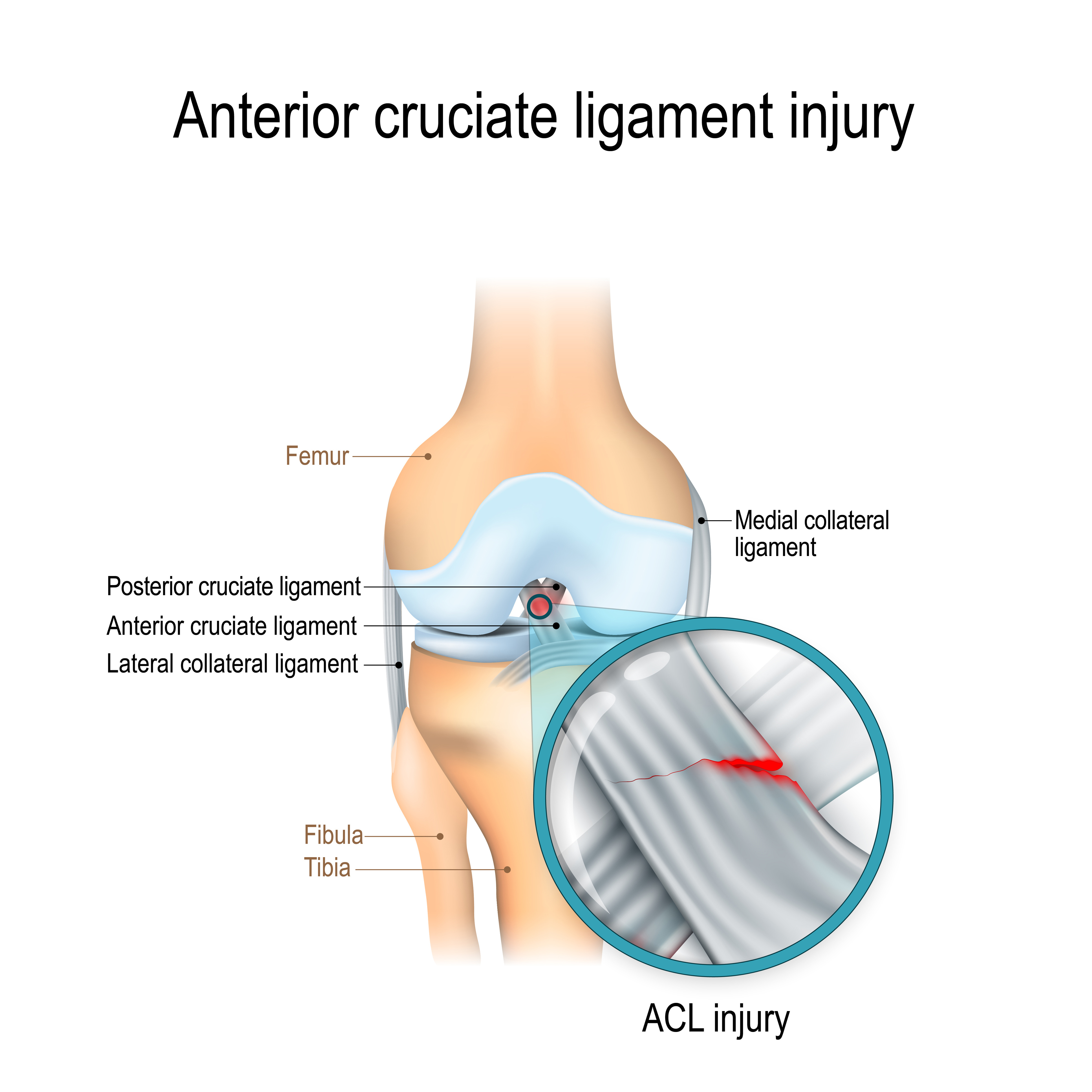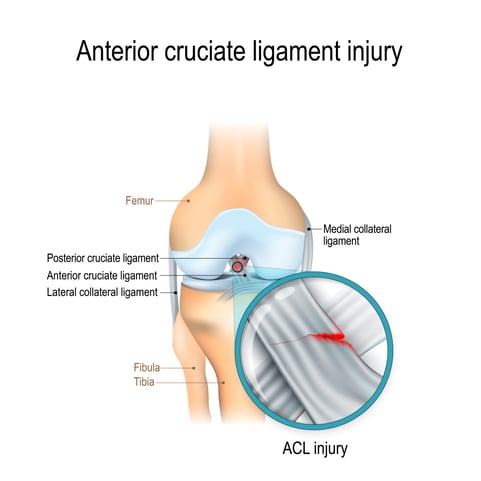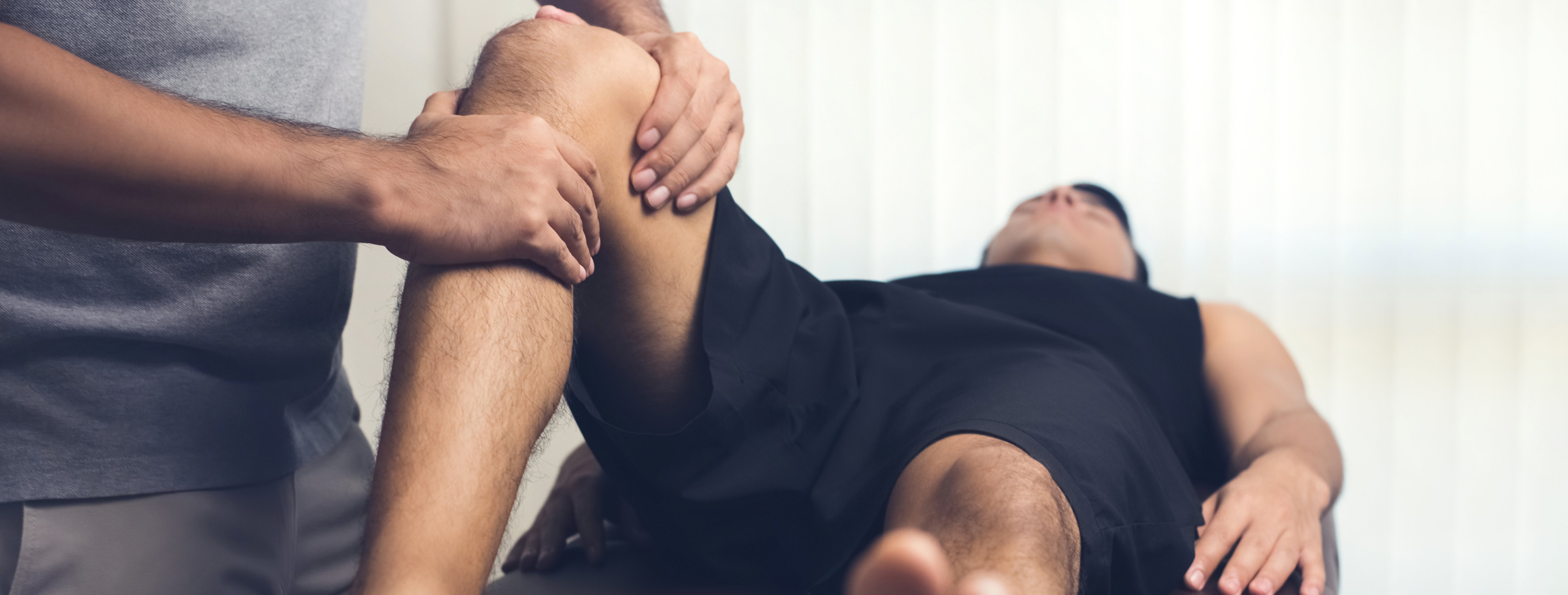What is an ACL Injury?

What is an ACL Injury?
The Anterior Cruciate Ligament (ACL) is a structure that runs through the middle of the knee joint that provides stability and keeps the shinbone (tibia) from sliding forward past the thigh bone (femur). An ACL injury typically occurs in sports that involve sudden changes in direction (pivoting and cutting) or jumping.
An ACL injury is common in athletes beginning in late adolescence, particularly in sports such as soccer and basketball. It has also been reported that women have greater risk than men.
The following post will outline what an ACL injury is, explain the importance of understanding it and provide 3 tips for preventing an ACL injury.
Table of Contents
What is an ACL Injury?
Why is it important?
How Can a Physiotherapist Help Me?
3 Tips for Preventing an ACL Injury
Conclusion
FAQ
What is an ACL Injury?
An ACL injury is the partial or complete tear or rupture of the ACL. An ACL injury can be caused by either the application of a direct or indirect force. In sports, contact injuries are reported to account for 30% of ACL injuries and non-contact injuries are reported to account for 70% of ACL injuries.

There are intrinsic and extrinsic risk factors for an ACL injury.
Some examples of intrinsic risk factors include:
- Genetic predisposition
- Foot morphology
- Gender-specific collagen fiber variations
- Quadriceps dominance
Some examples of extrinsic risk factors include:
- Uneven, wet, or muddy playing field
- Higher level of competition
- More aggressive playing style
- Shoe-surface interaction
Why is it Important?
Most people achieve full recovery with physical therapy or surgery and rehabilitation depending on the severity of their ACL tear. However, if management is not done properly it may lead to complications, which can prolong the recovery period.
An “ACL injury cascade” is the possible sequence of events after an ACL injury that may lead to:- Decreased function
- Sports disability
- Arthrosis
These consequences can impact daily living and prevent an athlete from returning to their sport. So if you suffer a trauma, whether a fall or a sports injury, it is important to seek treatment as soon as you can to risk further complications.
How Can a Physiotherapist Help Me?
You should see a healthcare provider such as a physiotherapist following your injury. In your first appointment, the physiotherapist will ask you questions and conduct a physical exam to see if you have an ACL injury and the severity of it. Whether you decide to do surgery or not, a physiotherapist can provide you a specific exercise treatment plan for your recovery.

3 Tips for Preventing an ACL Injury
- Strengthen the muscles around the hip and knee:
Having strong quadriceps and hamstring muscles makes the knee more stable which can protect it from injuries like an ACL tear. It is also recommended to do exercises that strengthen the hips as they often work with the muscles around the knee. - Implement balance training:
One of the most common situations that an ACL injury occurs in sports is during a quick change of direction, a sudden stop, and a faulty land from a jump. Implementing a balance training program would not only strengthen the smaller muscles around the knee but also prevent unnatural twists that cause ACL tears. - Practice proper technique:
Having perfect technique does not mean you will not injure your ACL. However, taking some time to develop proper technique for your specific sport can help ward off injuries especially if you perform a lot of movements like pivoting and jumping. Review your current technique with your coach or a physiotherapist to ensure that your technique is safe and correct.
Conclusion
In conclusion, an ACL injury is a common injury that can result from various activities, including sports. While there are intrinsic and extrinsic risk factors that contribute to the likelihood of experiencing an ACL injury, there are also preventative measures that can be taken to reduce the risk of injury. If an ACL injury does occur, it is essential to seek treatment from a healthcare provider such as a physiotherapist to ensure proper management and avoid potential complications. By following the tips for preventing an ACL injury and seeking appropriate treatment, individuals can reduce their risk of experiencing this injury and promote a safe and healthy lifestyle.
FAQ
How do I know if I injured my ACL?
The most common symptom of an ACL injury is a loud “pop” followed by immediate pain and swelling of the knee. It is often difficult to bear weight on the injured leg and pain is usually aggravated as you try to stand up. If you ever experience these symptoms it is highly recommended to get it checked as soon as possible!
How long does it take to recover from an ACL injury?
The recovery process from an ACL injury is slow and gradual. With proper management and rehabilitation, athletes who go through an ACL reconstruction usually return to their sport in 6 months post surgery. However in some cases, it could take up to 2 years to achieve full recovery.
Will I need surgery?
Not all ACL injuries require surgery but it depends on your activity level as well as the severity of the injury. Those with a partial ACL tear without any other knee complications may get better with physiotherapy and rehabilitation.
However, those who are athletes or who are involved in a lot of activities are typically encouraged to consider surgical treatment. Talking to a physiotherapist will be beneficial as they can assess your condition and create a treatment plan specific to your needs.